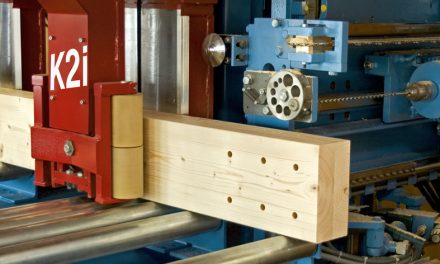Looking back over the past 12 months, it’s interesting to note there has been a significant change in the nature of issues that have come across our desk. In past yearly reviews, coatings and direct stick flooring have been major issues. Coatings ranked as high as number two on some of the consumer authorities’ complaints received lists, followed closely by direct stick flooring.
This year moisture-related issues and post-installation maintenance have featured prominently in our work load.
We would like to think that the information produced and readily available from coating manufacturers, timber distributors, flooring associations, trade seminars, and industry educators has contributed to the reduction in coating and direct stick flooring issues.
However, we believe that it’s the changing attitudes and industry and consumer behaviours that are at the crux of the matter, and presenting an enormous challenge.
How many times have you turned up to a job only to find that paint is still wet, there is no power, the building is locked, and you can’t park anywhere close to the site? Job sites that are incomplete at the commencement of installation are pretty common and, aside from the inconvenience to our scheduling, are a key contributor to moisture-related problems.
From a practice perspective, site assessment and concrete slab preparation prior to installation would greatly minimise many of the moisture-related issues encountered by contractors. The processes for these checks are written as prerequisites in many of the standards and best work practise guidelines. Many issues can be avoided if an assessment is made before commencing the installation.
External surface drainage should be directed away from the building. This is often overlooked and slab-edge dampness becomes a possibility. Where applicable sub-floor vents should be checked for quantity, placement and working order. Insufficient, or blocked, vents can cause a build-up of humidity in the sub-floor space leading to a wide range of moisture-related issues.
Internal checks should confirm that all other trades have completed their work; painters, plumbers, tilers and carpenters all use products that have the potential to contaminate the substrate or timber flooring.
Windows and doors should be installed and heating and cooling systems fitted and operational to make sure the job site and timber product have acclimatised to the atmospheric conditions expected to prevail in service. Correct acclimatisation is fundamental to minimising timber movement in the future.
Concrete slab presentation/preparation is also key; how a concrete slab looks can be very informative. Very few slabs are poured to specifications suitable for the installation of timber flooring; humps and divots, which require grinding or levelling, are almost a certainty. There are also often subtler hints that indicate moisture has been, or will be, a potential problem, such as cracks in the floor, dark patches (damp spots) or efflorescence (salt damp).
Then there are the curing compounds and additives that you can’t see or smell. Today, more than ever before, concrete is likely to contain curing compounds and other additives that can adversely affect the adhesive bond between the timber and
sub-floor. Many adhesive manufacturers recommend the concrete be ground, pH, moisture and bead tested to ensure that the substrate is dry and porous enough for moisture barriers and adhesives to adhere and bond to the concrete.
A SPECIAL NOTE ON MOISTURE TESTING EQUIPMENT
As discussed last month, the bead test and the electrical resistance metre provide a good indication of a slab’s porosity and moisture content. Remember to lightly grind/sand the surface removing surface treatments and contaminants. We still use both of these methods: they provide an instant result and are useful for confirming information gathered from internal and external site evaluation regarding stormwater run-off, garden beds, or anywhere moisture can exist.
If you have access to a relative humidity metre, use it. It’s interesting to note that all means of moisture testing, other than a relative humidity test, have always been a guide only. This means that a relative humidity test is the only true moisture test for concrete floors.
It’s considered best work practice to document all details of your testing on the worksheet, and with good reason; this information can be critical in the event of a problem or dispute.
One of the most common causes of complaints and disputes originates from post-installation maintenance, and is associated with the cleaning practices employed by consumers; many of whom like to use copious amounts of water to clean the floor. Changing consumer attitudes and their understanding of the product they buy requires an exchange of information regarding appropriate practises. As a contractor we are responsible for this exchange, which should ideally be in writing if not contained within the contract.
In almost every sphere of life prevention is generally found to be the best tactic. It is easier and less costly, or painful, than the cure. This statement is most certainly true for moisture-related timber flooring and post-installation maintenance issues, which are easily addressed before starting a flooring installation.Ray and Sharon Brice specialise in mediation training and project management. They have four decades experience in the flooring industry.
Phone: 0407 591 697 | Email: {encode=”rayandsharon@timbertradernews.com” title=”rayandsharon@timbertradernews.com”}











